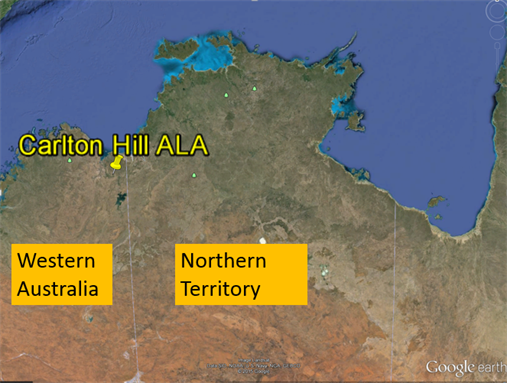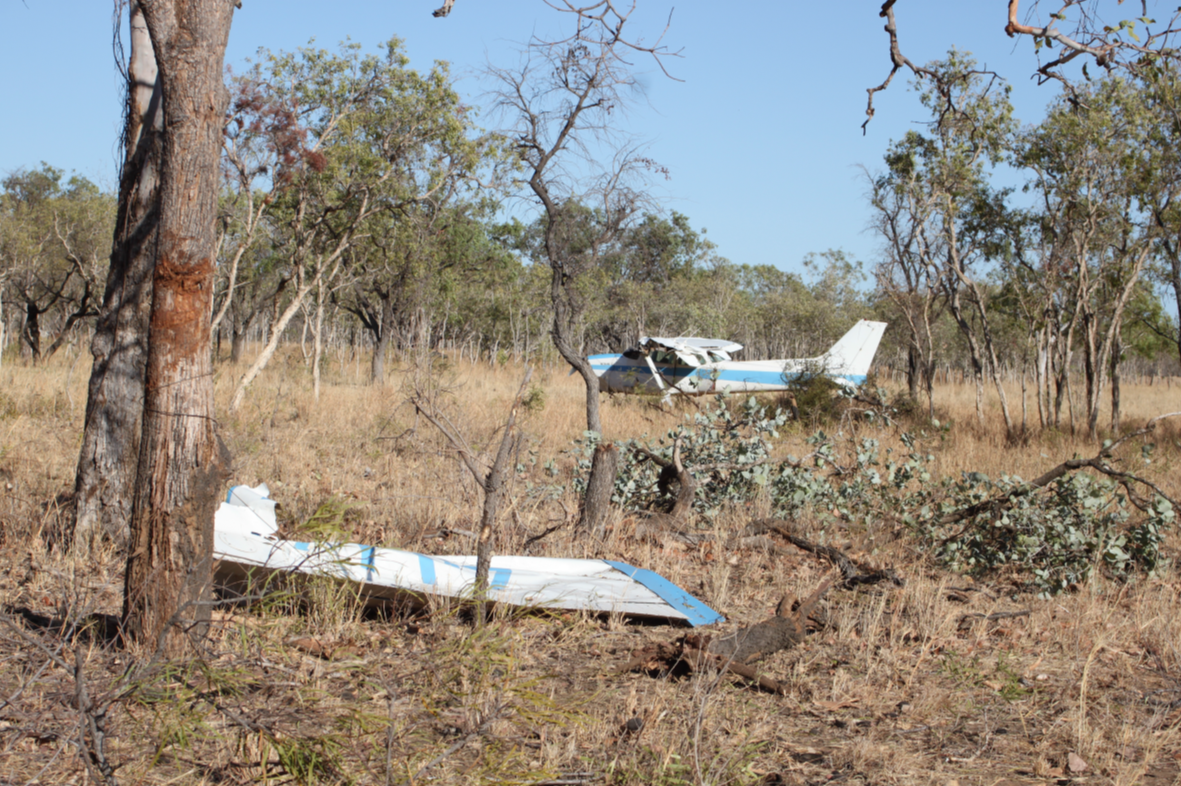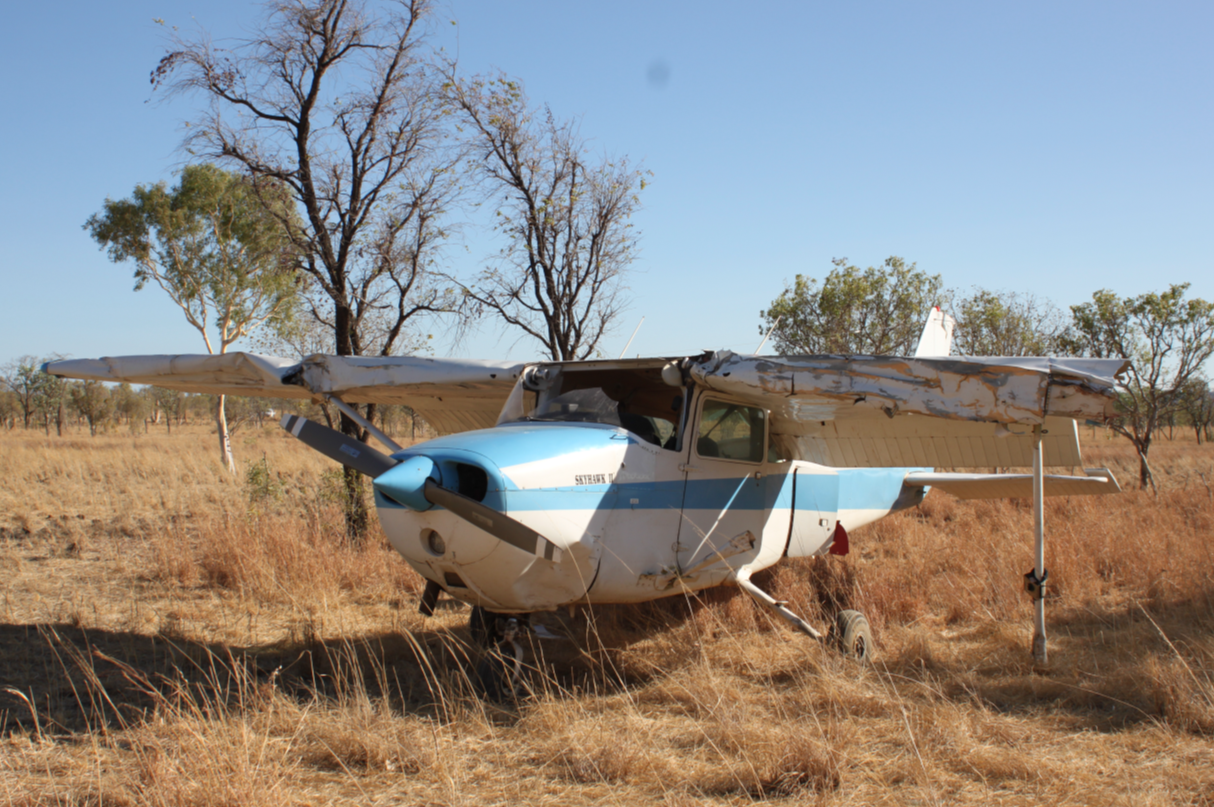What happened
Early in the morning on 10 September 2015, the pilot refuelled and prepared a C172 aircraft, registered VHFPZ, for a private flight departing Carlton Hill Station aircraft landing area (ALA), Western Australia (Figure 1). The pilot, the sole person on board, had planned a routine flight around the station to check stock water supplies. After conducting the before take-off checks, the pilot taxied the aircraft from the hangar to the threshold of runway 12, just before 0550 Western Standard Time (WST).
Figure 1: Location of Carlton Hill ALA

Source: Google earth annotated by the ATSB
The pilot configured the aircraft with 10° flap, and commenced the take-off run in good weather conditions, with a head wind of about 10 kt and a temperature of about 18°C. The aircraft reportedly accelerated normally, with lift-off occurring at around 65-70 kt. As per normal, the pilot allowed the aircraft to accelerate toward the cruise climb speed of about 75-80 kt prior to establishing it in the climb.
At about 150-200 ft above the ground, the aircraft performance rapidly deteriorated. The pilot reported that the revolutions per minute (RPM) dropped from about 2,700 rpm to about 2,000 rpm, and the engine was making an abnormal mechanical sound. The pilot immediately checked the fuel and mixture control settings and applied carburettor heat. However, the aircraft was not able to maintain altitude. With the pilot unable to determine the cause of the partial engine failure, they prepared for a forced landing.
With limited time and options available, the pilot selected a space between trees at the end of the runway to land. They then turned off the fuel, pulled the mixture control to idle cut off, and selected full flap. In the seconds remaining, the pilot steered the aircraft between trees to keep the cabin intact. The wings struck the trees, resulting in the outboard section of the left wing breaking off. The aircraft travelled a further 20 m, before coming to rest (Figure 2). The pilot, who was not injured, was able to exit via the passenger door. The aircraft was substantially damaged (Figure 3).
Figure 2: VH-FPZ after the forced landing with part of the left wing in the foreground
Source: Pilot
Figure 3: VH-FPZ damage.Note the substantial damage to the left wing and tree impact on right wing
Source: Pilot
Pilot experience and comments
The pilot held a Private Pilot’s Licence (Aeroplane) and had a total of about 518 hours at the time of the accident. VH-FPZ was the dedicated aircraft for Carlton Hill station, and the pilot had been flying it since the start of 2015, with about 150 hours on the aircraft.
The pilot reported that everything appeared routine and there were no abnormalities with the aircraft during the pre-take-off engine and instrumentation checks.
The pilot commented that the engine malfunction was unexpected, and the event unfolded very quickly.
The aircraft, VH-FPZ
The pilot reported that there were no outstanding defects on the maintenance release and that the aircraft had completed all scheduled maintenance. In the time the pilot had been operating this aircraft, it had had one previous instance of degraded performance. However, in that instance, a post flight engineering inspection was unable to determine a cause.
Weather
The two aerodrome weather reports (METAR) obtained from the Bureau of Meteorology for nearby Kununurra Airport (approximately 20 NM to the south-east of Carlton Hill ALA) did not indicate conditions suitable for carburettor icing.
Post-accident inspection
While a full engine examination has not yet been completed, an examination by a Licenced Aircraft Maintenance Engineer found that the left magneto had failed. This most likely contributed to the aircraft’s deteriorated performance.
Safety message
Simulated total loss of power and a subsequent practice forced landing is at the core of a pilot’s emergency training. However, data shows that for light single engine aircraft a partial power loss is three times more likely to occur than a complete engine failure.
Confronted with minimal options at low altitude, the pilot in this occurrence had to make important decisions in a short space of time. The ATSB’s publication and You Tube video “Managing partial power loss after take-off in single-engine aircraft” is available on the ATSB website. This information highlights the importance of pre-flight decision making and planning, for emergencies and abnormal situations, for each particular aerodrome.
Aviation Short Investigations Bulletin - Issue 45
Purpose of safety investigationsThe objective of a safety investigation is to enhance transport safety. This is done through:
It is not a function of the ATSB to apportion blame or provide a means for determining liability. At the same time, an investigation report must include factual material of sufficient weight to support the analysis and findings. At all times the ATSB endeavours to balance the use of material that could imply adverse comment with the need to properly explain what happened, and why, in a fair and unbiased manner. The ATSB does not investigate for the purpose of taking administrative, regulatory or criminal action. TerminologyAn explanation of terminology used in ATSB investigation reports is available here. This includes terms such as occurrence, contributing factor, other factor that increased risk, and safety issue. Publishing informationReleased in accordance with section 25 of the Transport Safety Investigation Act 2003 Published by: Australian Transport Safety Bureau © Commonwealth of Australia 2015
Ownership of intellectual property rights in this publication Unless otherwise noted, copyright (and any other intellectual property rights, if any) in this report publication is owned by the Commonwealth of Australia. Creative Commons licence With the exception of the Coat of Arms, ATSB logo, and photos and graphics in which a third party holds copyright, this publication is licensed under a Creative Commons Attribution 3.0 Australia licence. Creative Commons Attribution 3.0 Australia Licence is a standard form licence agreement that allows you to copy, distribute, transmit and adapt this publication provided that you attribute the work. The ATSB’s preference is that you attribute this publication (and any material sourced from it) using the following wording: Source: Australian Transport Safety Bureau Copyright in material obtained from other agencies, private individuals or organisations, belongs to those agencies, individuals or organisations. Where you wish to use their material, you will need to contact them directly. |




